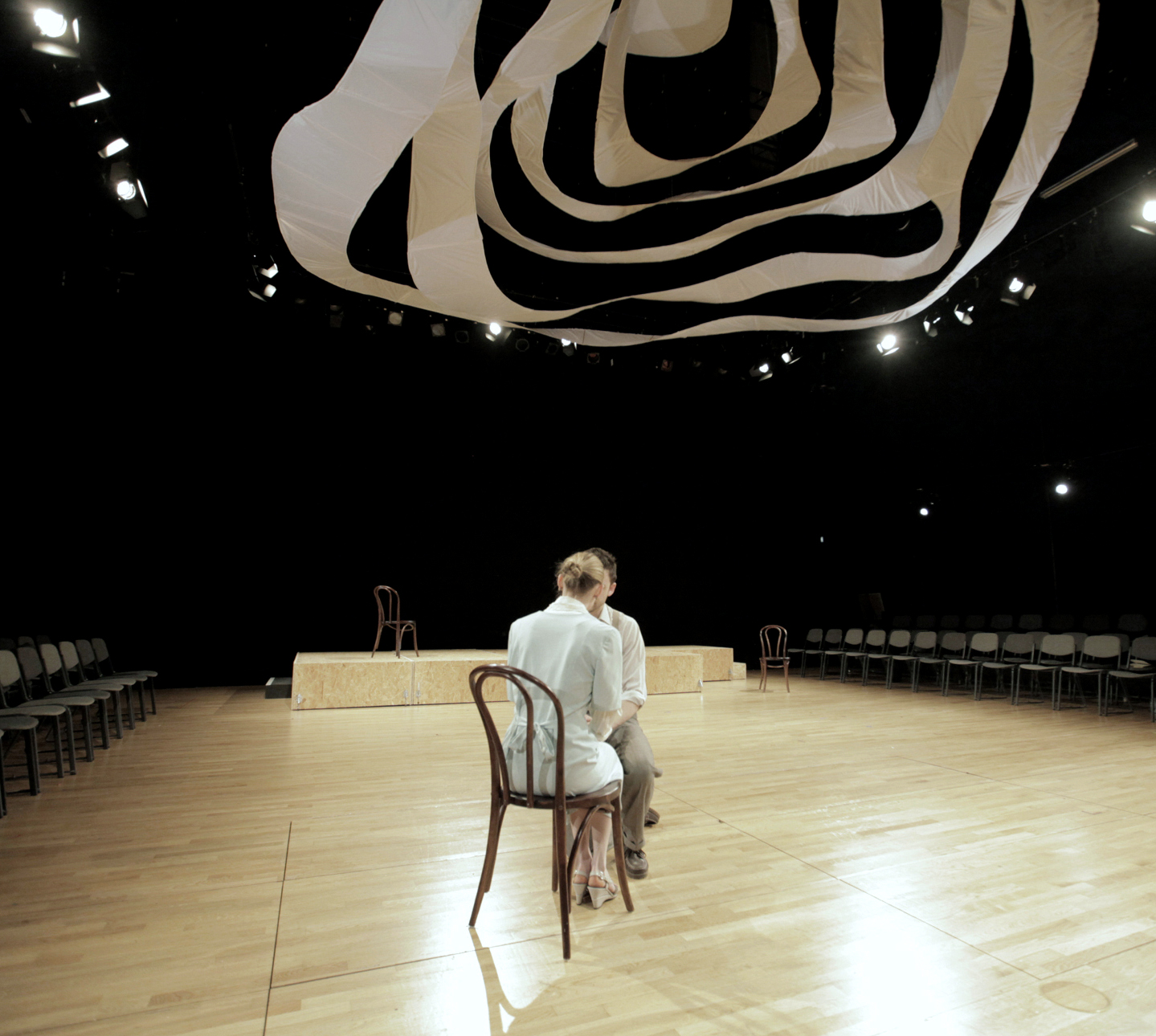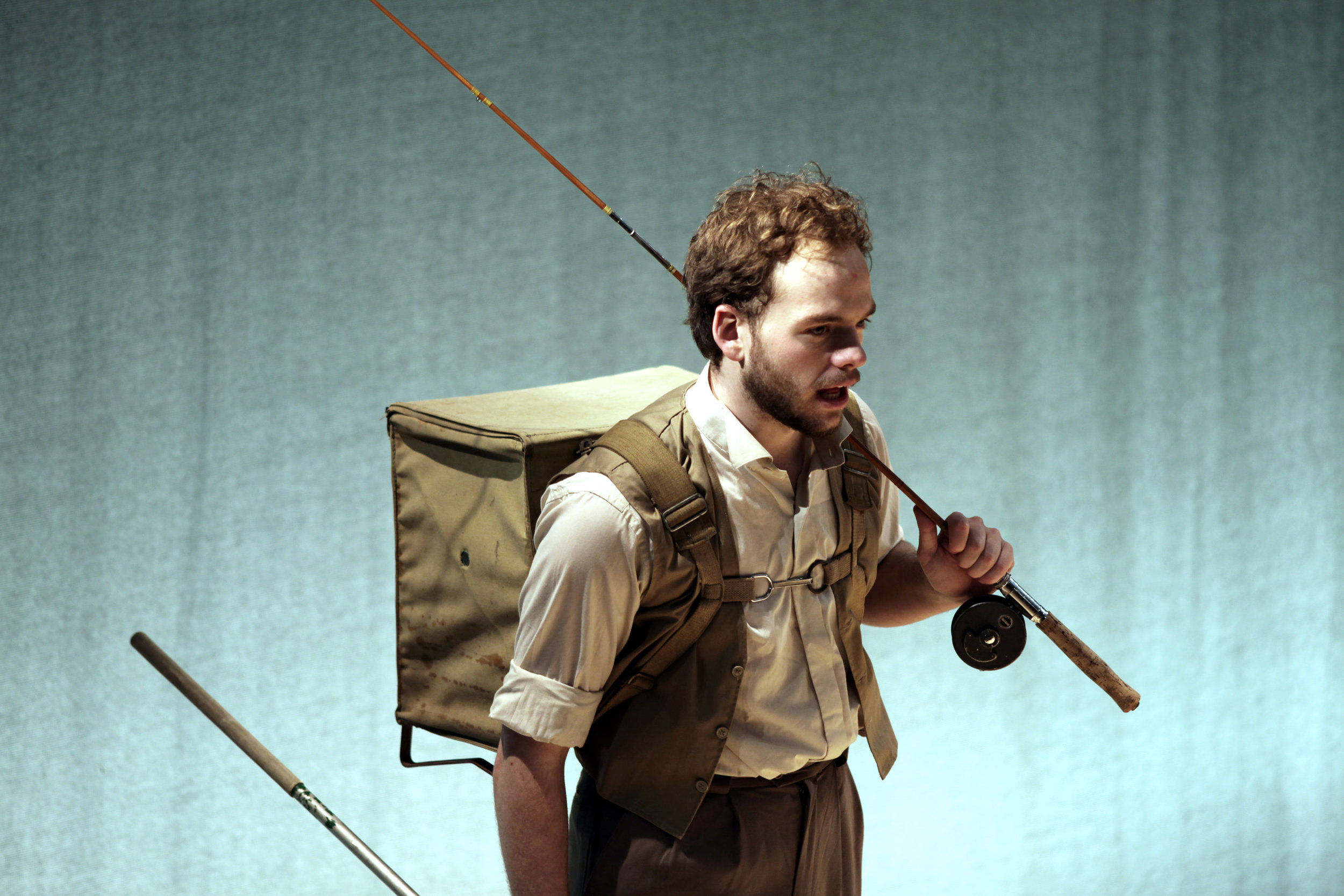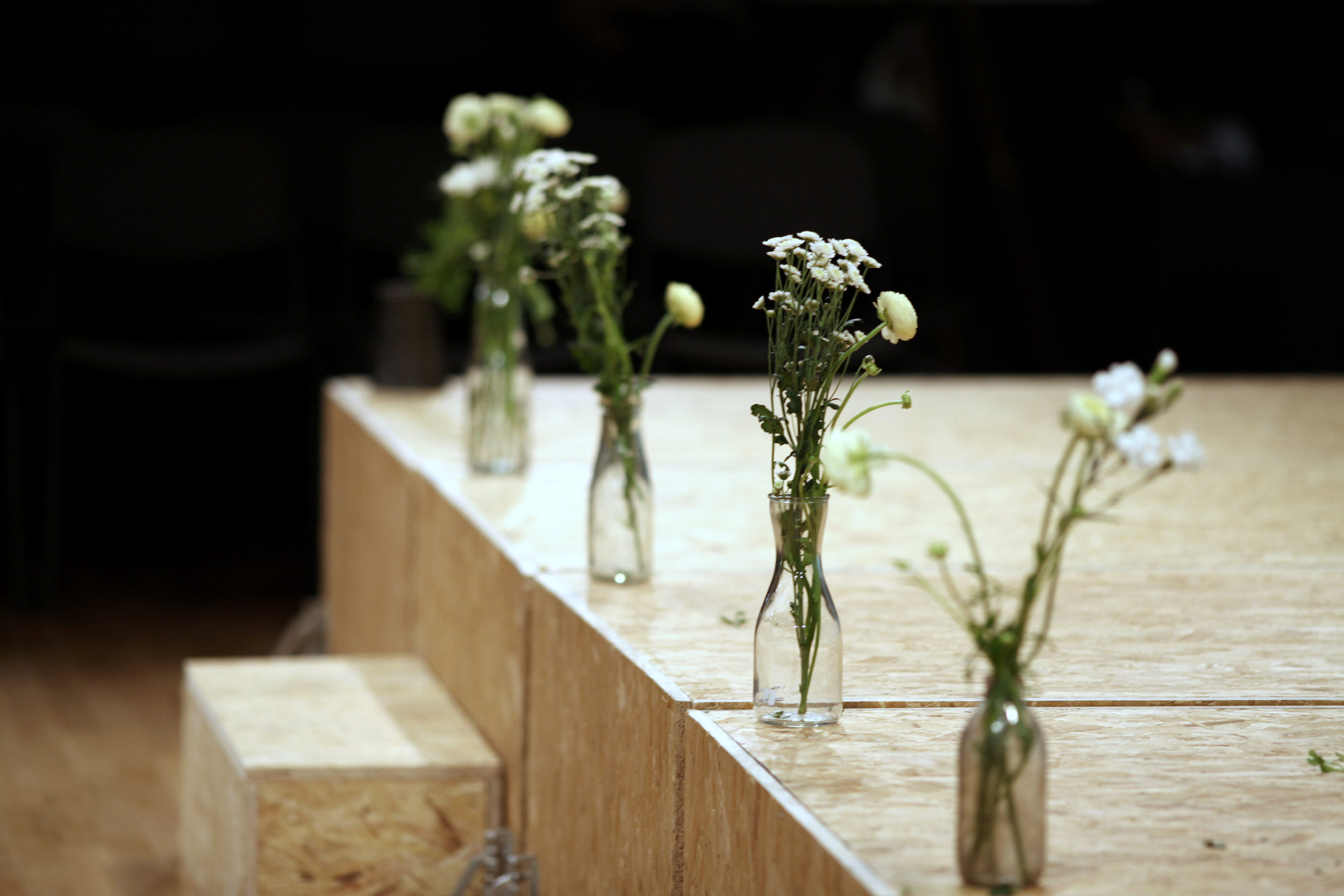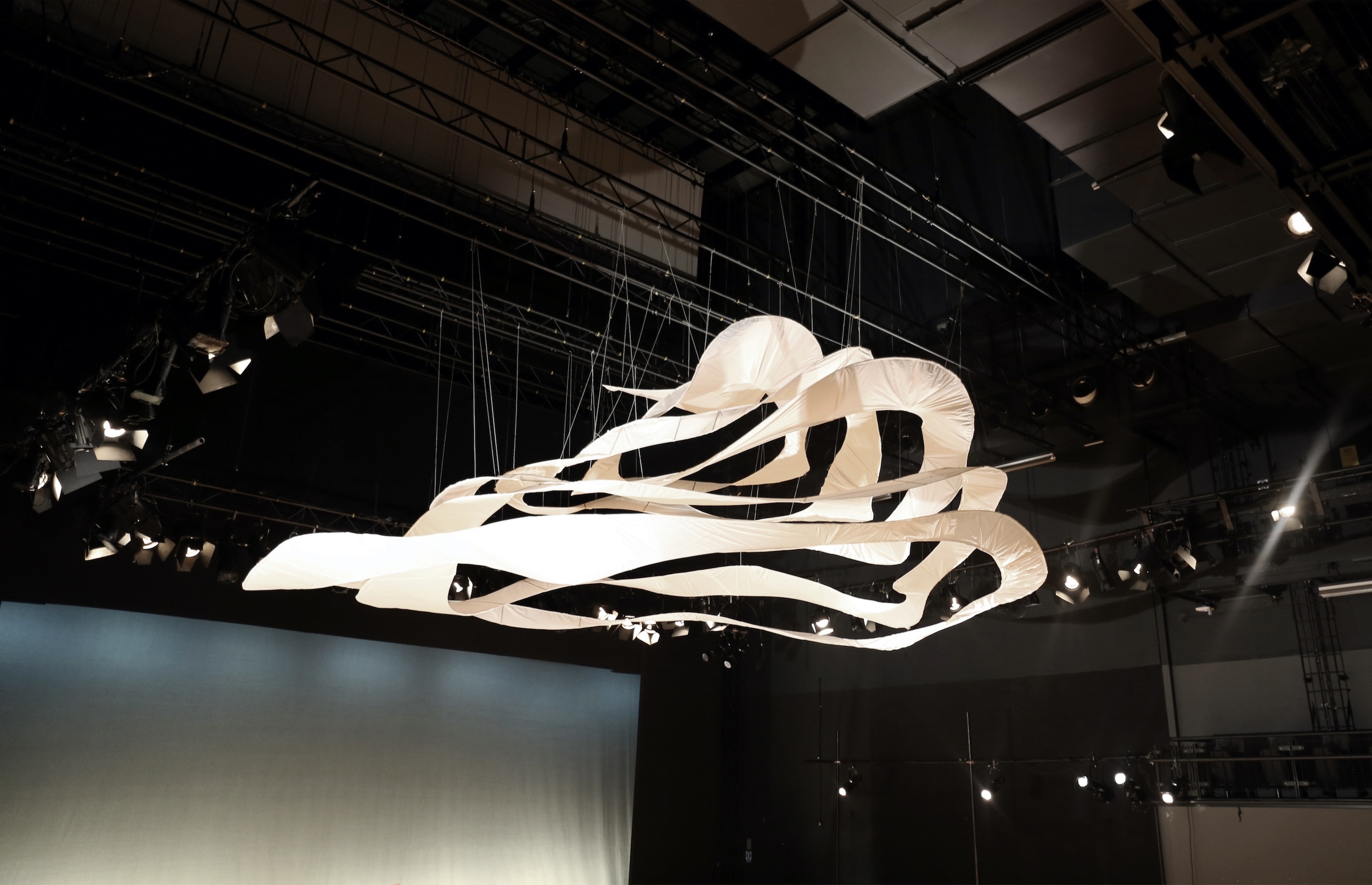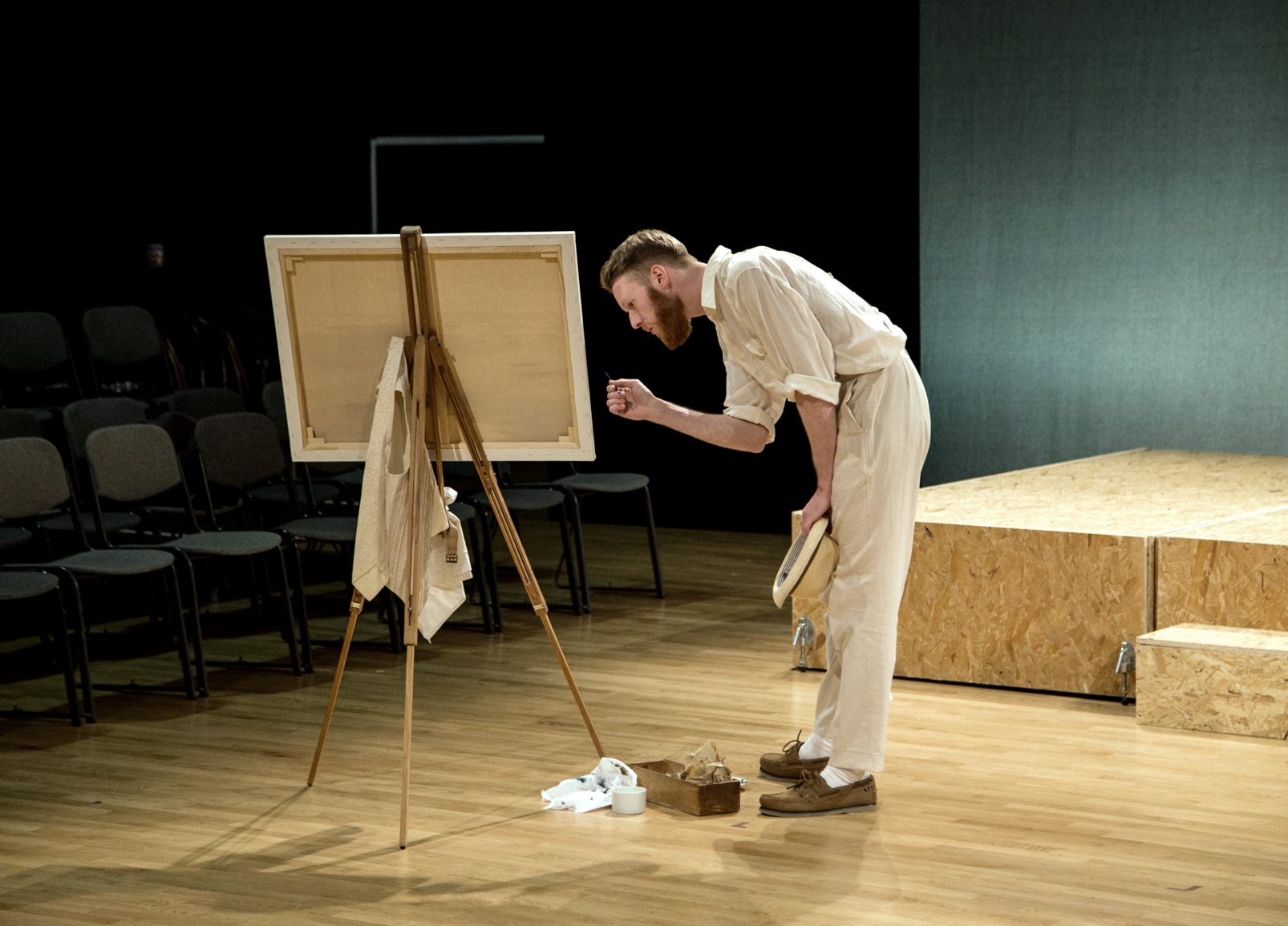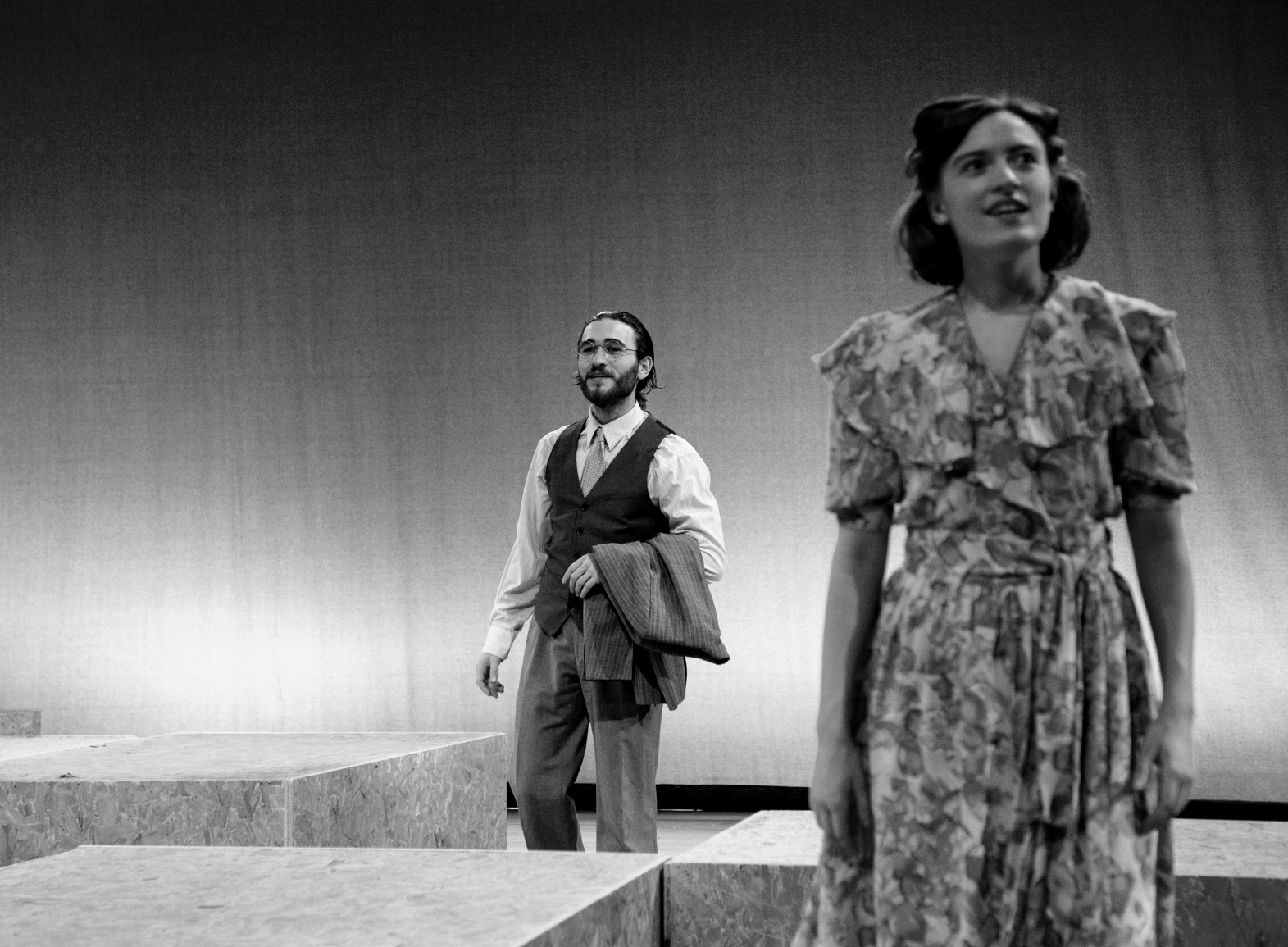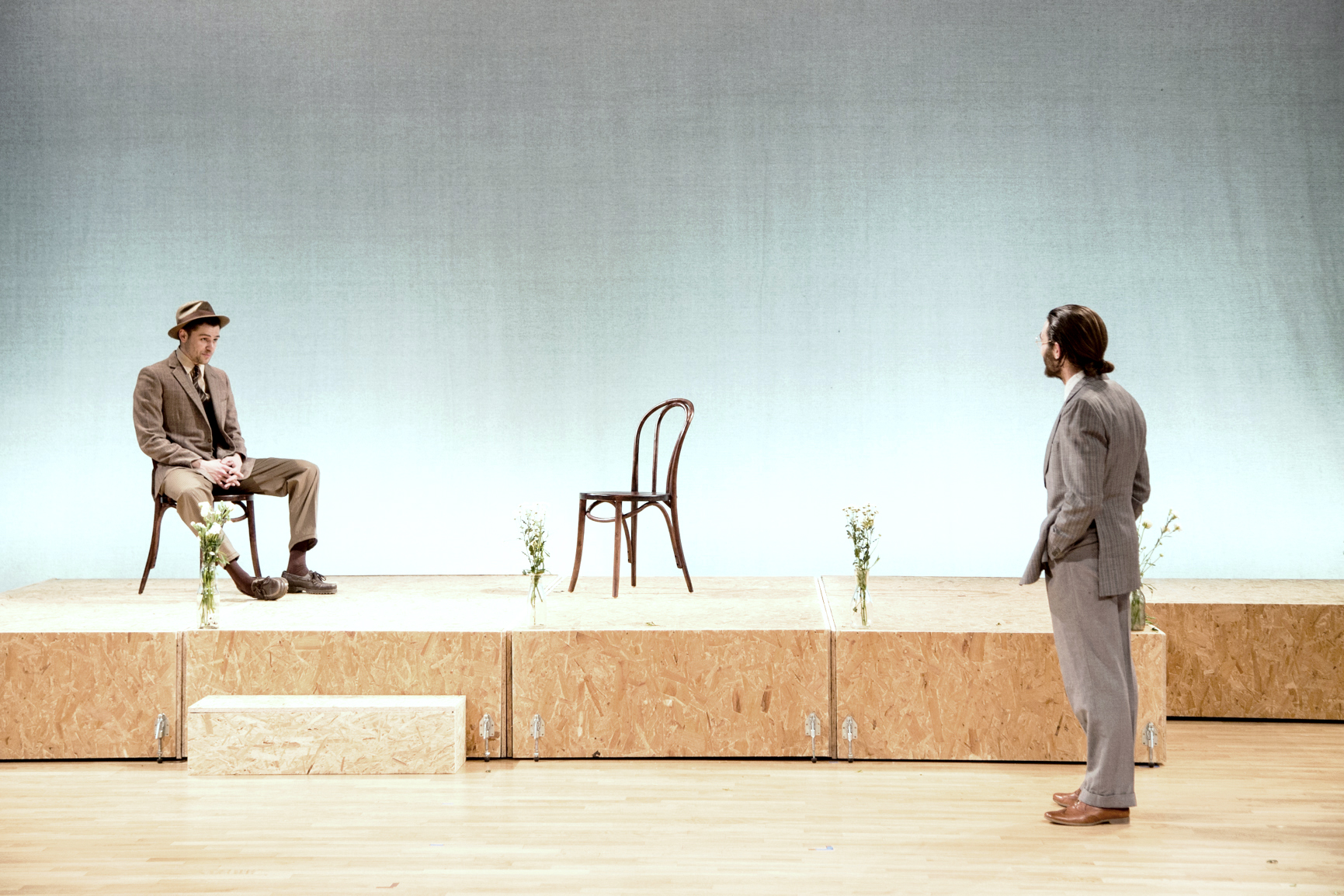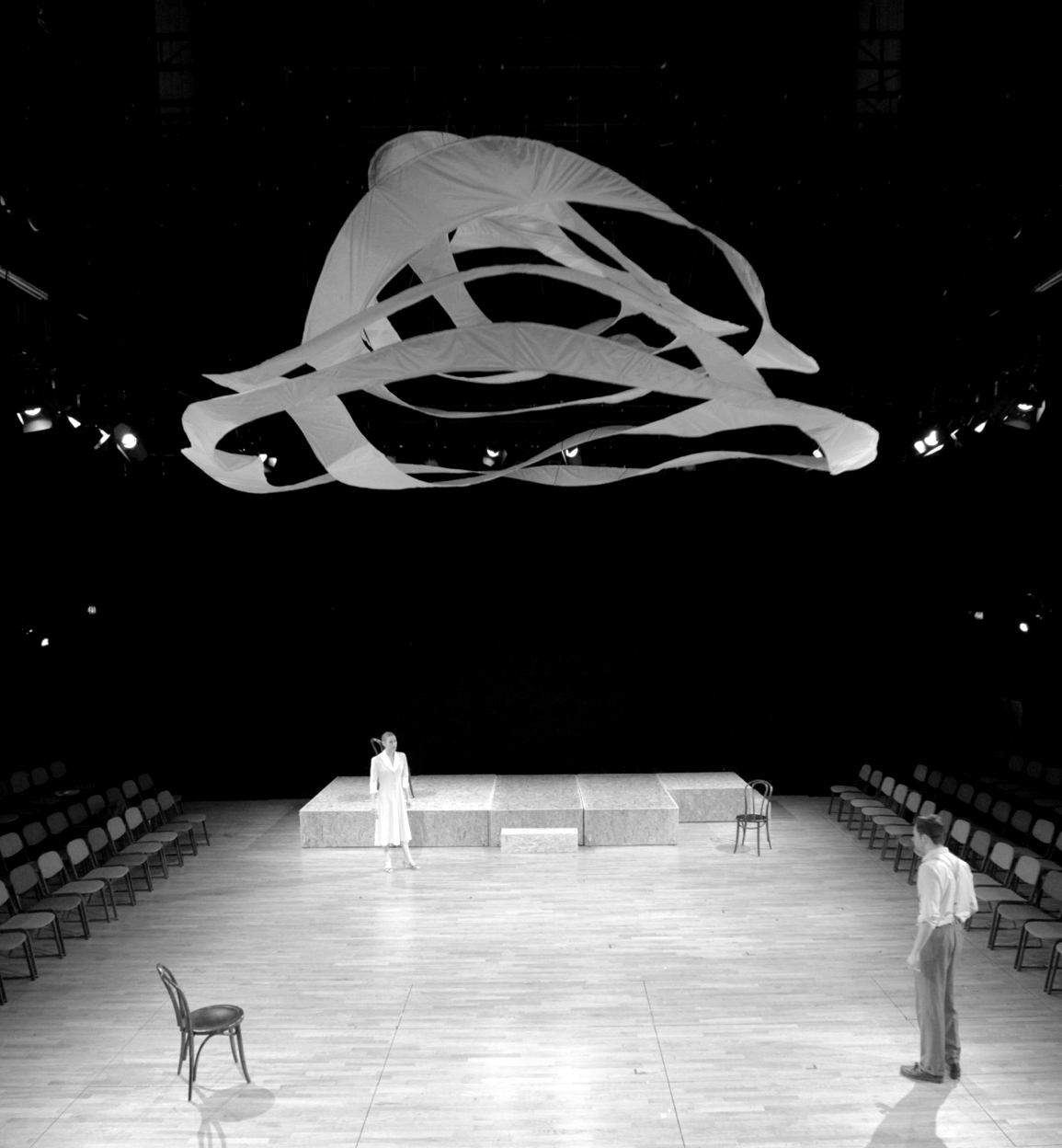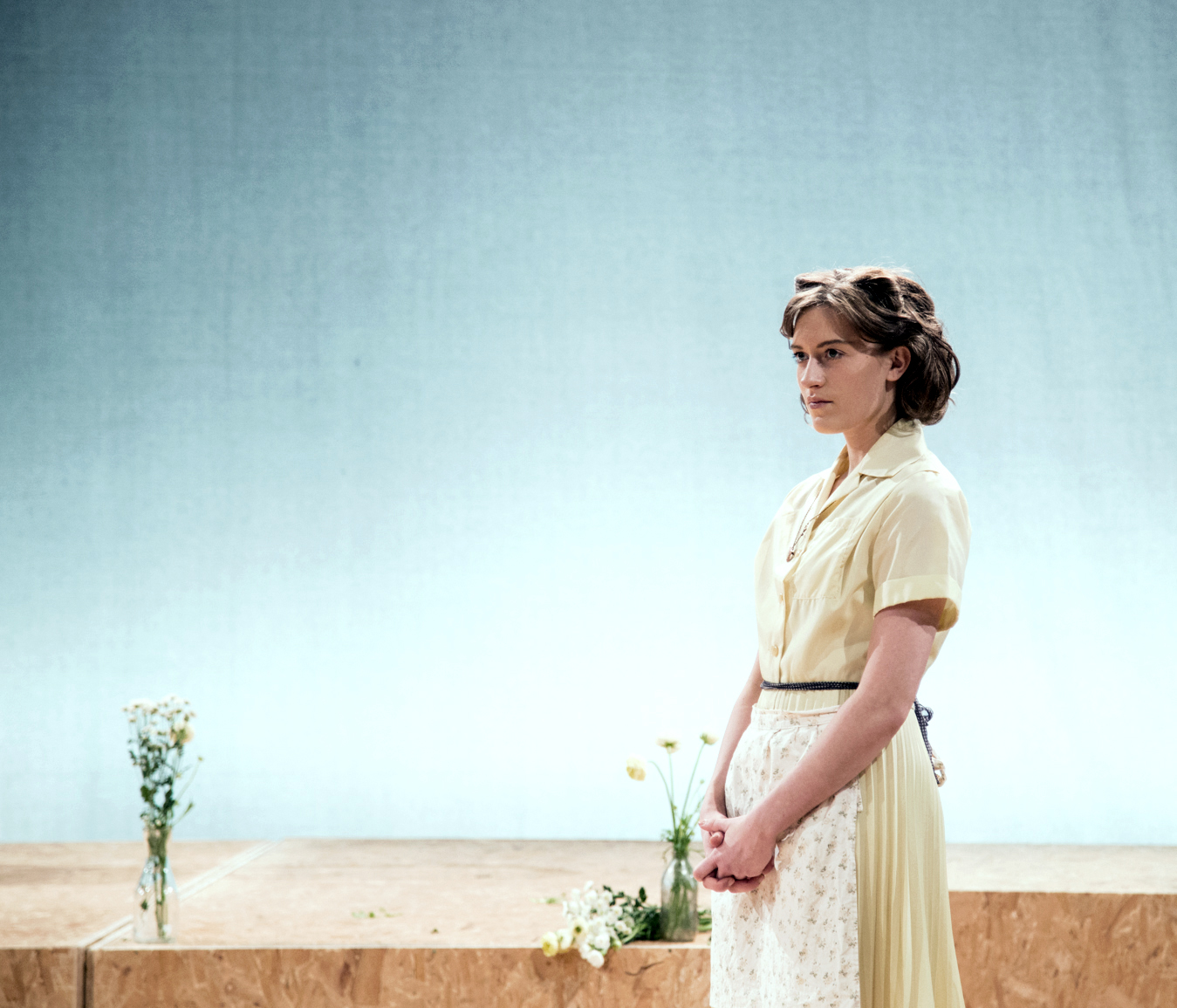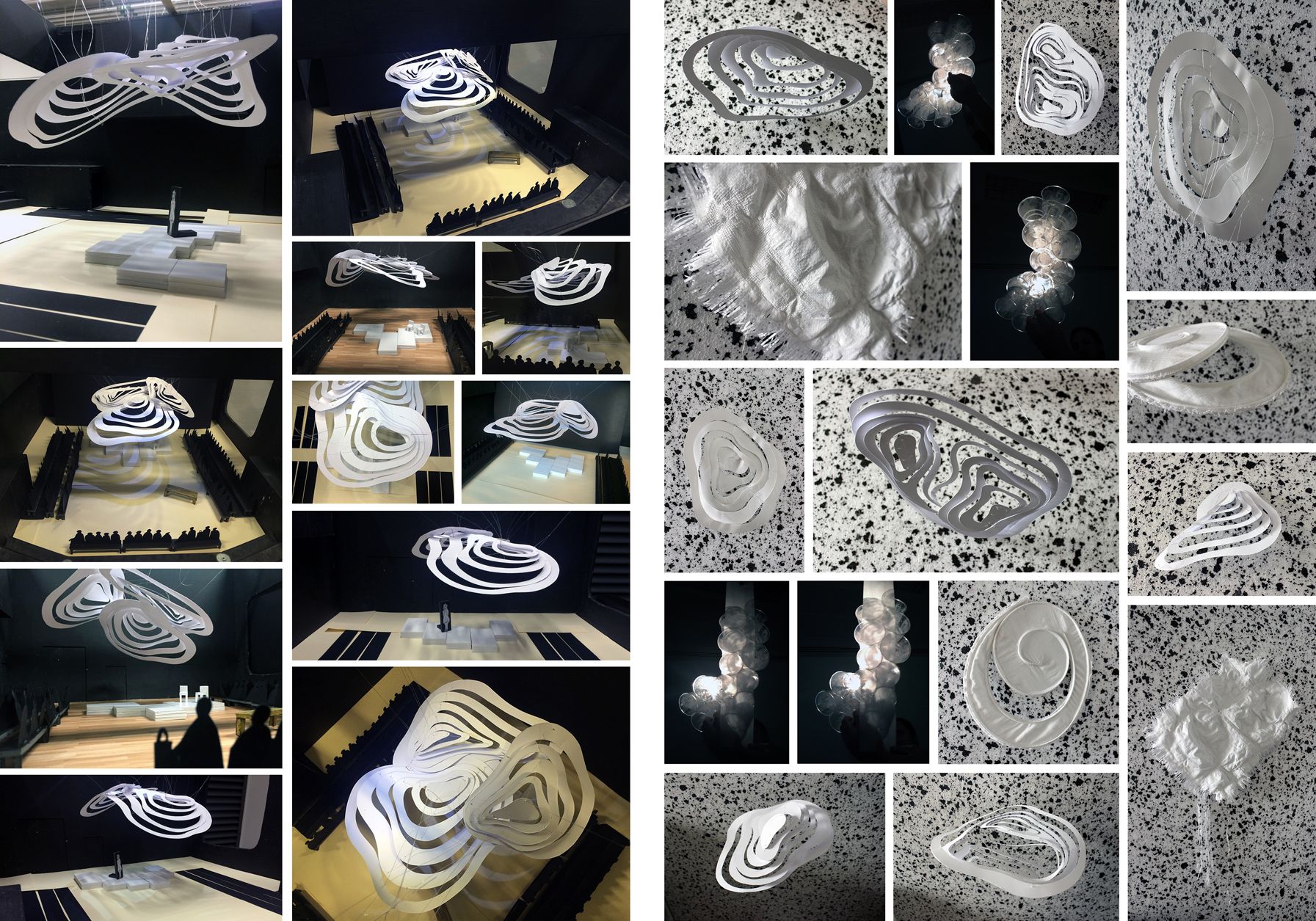Staging of The Lady from the Sea at The Platform Theatre photographed by Nikhil Vettukattil, Pearlie Frisch and Laura Albeck
Set element being installed photographed by Issa Wang
Model box 1:25 of preliminary design and experimental models for suspended set element
Visual research for suspended set element and transformable construction at the stage floor, various designers and artists
THe lady from the sea
This production, mounted at the Platform Theatre, consisted of a collaboration between Drama Centre London, director Jonathan Humphreys, set designer Laura Albeck, costume designer Sonia Birman and lighting designer Matthew Haskins. The play itself was an adaption of Ibsen’s 1888 drama Fruen fra Havet into English by David Eldridge. The staging was founded on a conceptual interpretation of the recurrent themes of isolation, encapsulation, and longing, combining the fashions of the late 1940s with a non-realist, gestural set.
The research for the design centered on the realist traits of Ibsen, and how the approach could be framed philosophically in the Platonic trio of idea-copy-simulacrum: The idea is the golden, harsh yet beautiful Norwegian landscape and its modest, wooden dwellings, Ibsen’s play with its scenic notes and detailed descriptions the copy, and finally the simulacrum the interpretation. This idea was furthered by references in a mobile-esque set element to the contour lines of topographic maps. The hanging structure also alluded to Plato’s own cave fable, and, in particular, how the shadows from the piece would envelope the characters in a condensed space and hint at the outside world they so sorely missed.
To complement the suspended set element, the design used a simple system of moveable steel decks, all covered in cork plating, to indicate the various locations encountered. As an example, the steel decks were placed next to each other to generate a veranda, and later pushed forward in a pyramidal shape to illustrate a garden pond. Furthermore, to symbolize a hilltop and a winding path, the blocks were scattered to create elevated elements that resembled an undulating landscape, while also referencing the topographic nature of the overhanging set element.
